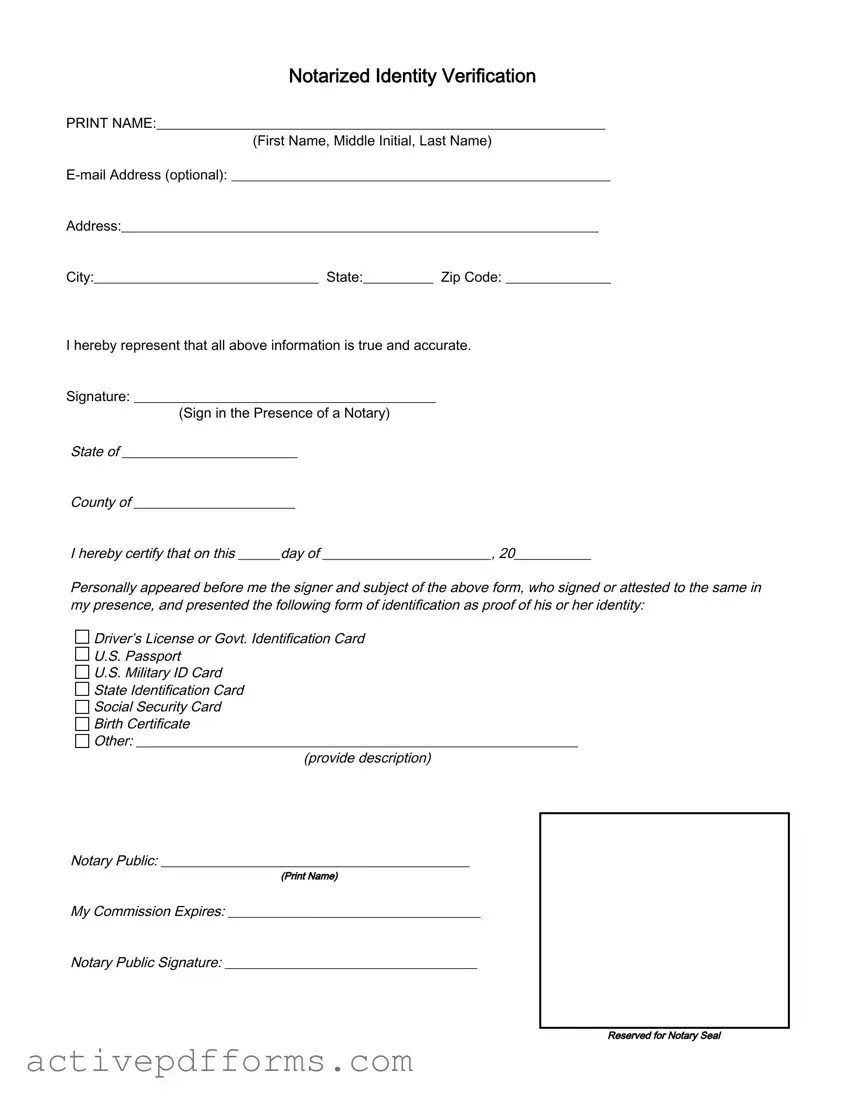Free Notarized Identity Verification PDF Template
The Notarized Identity Verification form serves as a crucial document designed to officially confirm an individual's identity through a notary public's validation. This process involves the individual providing specific personal information, such as their full name, address, and optionally, an email address, ensuring all stated facts are true and under oath. Furthermore, the form requires the signatory to provide acceptable forms of identification in the presence of the notary, ranging from government-issued IDs to birth certificates, solidifying the authentication process.
Edit Notarized Identity Verification Now



 Driver’s License or Govt. Identification Card
Driver’s License or Govt. Identification Card
 U.S. Passport
U.S. Passport
 U.S. Military ID Card
U.S. Military ID Card
 State Identification Card
State Identification Card
 Social Security Card
Social Security Card
 Birth Certificate
Birth Certificate
 Other: _______________________________________________________________
Other: _______________________________________________________________